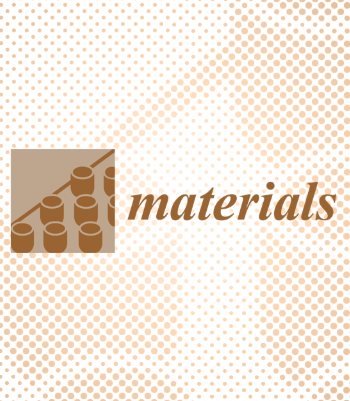镁钆合金沉淀硬化的数值研究
IF 3.2
3区 材料科学
Q3 CHEMISTRY, PHYSICAL
引用次数: 0
摘要
镁合金中的第二相颗粒会严重影响材料的机械性能。本研究建立了明确包含第二相颗粒的三维有限元模型。模拟结果与 Mg-1Gd 合金的实验结果进行了校准。详细研究了圆柱形颗粒的分布、大小和取向等因素对沉淀硬化的影响。同时研究了颗粒与基体之间的三种界面条件--完全结合以及高强度和低强度结合。结果表明,与颗粒分布和大小因素相比,界面条件对沉淀硬化的影响更大。相反,圆柱形颗粒在晶界的取向对沉淀硬化的影响大于界面性质的影响。当第二相颗粒相对较大且全部位于晶界时,硬化效果会得到改善,镁合金会显示出相对较高的流动应力。然而,第二相颗粒的高硬化效应可能会导致局部应力集中,并可能使镁合金早期失效或延展性降低。本文章由计算机程序翻译,如有差异,请以英文原文为准。
Numerical Investigation on Precipitation Hardening of Mg-Gd Alloys
The second-phase particles in magnesium alloys could affect the mechanical properties of the material significantly. In this work, 3D finite element models with explicit incorporation of second-phase particles are established. The simulations are calibrated with the experimental results of the Mg-1Gd alloy. The influences of factors, such as the particle distribution, size, and orientation of cylindrical particles, on precipitation hardening are investigated in detail. Three interface conditions between particles and the matrix—perfect bonding and high- and low-strength bonding—are studied at the same time. The interface conditions are shown to exert a stronger influence on precipitation hardening compared to the factors of particle distribution and size. In contrast, the influence of the orientation of cylindrical particles at grain boundaries outweighs the effect of interface property. When second-phase particles are relatively large and all located at grain boundaries, the hardening effect can be improved, and the magnesium alloy shows relatively high flow stress. However, the high hardening effect from the second-phase particles could result in high local stress concentration and possible early failure or low ductility of Mg alloys.
求助全文
通过发布文献求助,成功后即可免费获取论文全文。
去求助
来源期刊

Materials
MATERIALS SCIENCE, MULTIDISCIPLINARY-
CiteScore
5.80
自引率
14.70%
发文量
7753
审稿时长
1.2 months
期刊介绍:
Materials (ISSN 1996-1944) is an open access journal of related scientific research and technology development. It publishes reviews, regular research papers (articles) and short communications. Our aim is to encourage scientists to publish their experimental and theoretical results in as much detail as possible. Therefore, there is no restriction on the length of the papers. The full experimental details must be provided so that the results can be reproduced. Materials provides a forum for publishing papers which advance the in-depth understanding of the relationship between the structure, the properties or the functions of all kinds of materials. Chemical syntheses, chemical structures and mechanical, chemical, electronic, magnetic and optical properties and various applications will be considered.
 求助内容:
求助内容: 应助结果提醒方式:
应助结果提醒方式:


